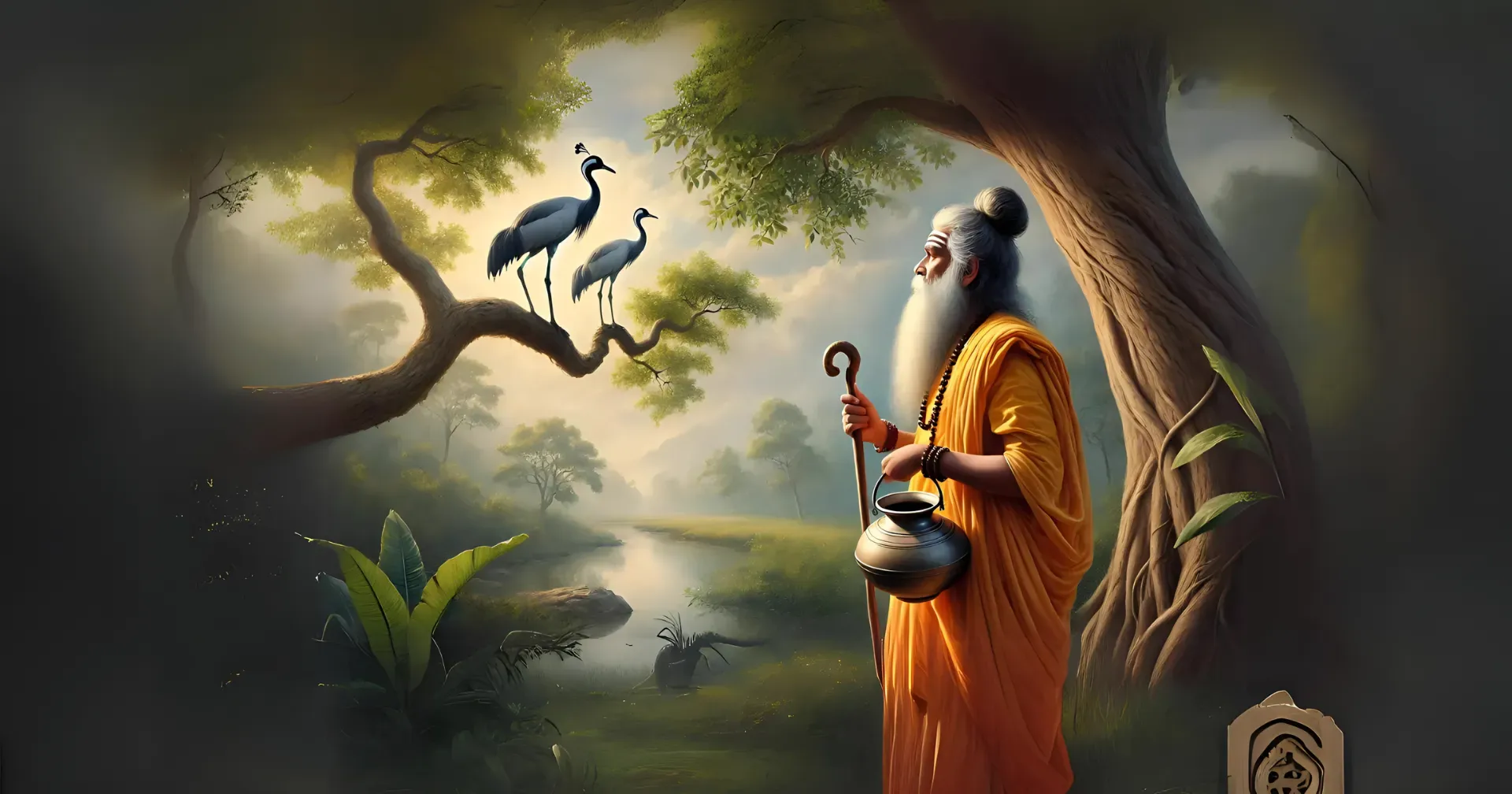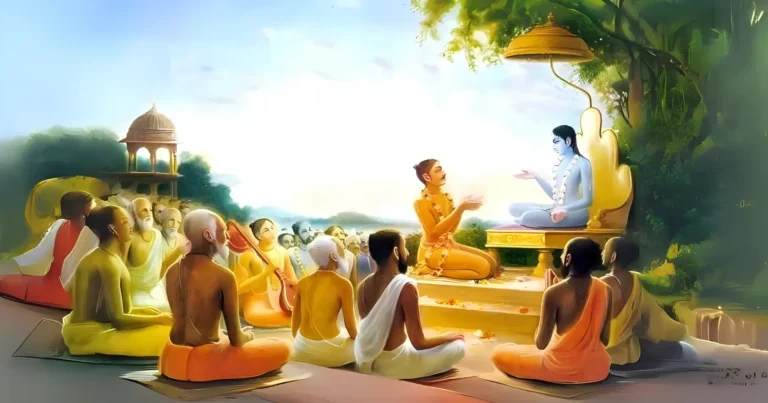Please Like the Blog and Share it for Maximum Reach
Table of Contents
Krauncha Bird in the Ramayana
The Krauncha bird is very relevant in the Vedic Ethos. Its mention is as ancient as the history of creation. Ramayana is perhaps the oldest epic, ever written in the history of humanity. The mention of the Krauncha bird exists in the Ramayana of Sri Valmiki Maharshi.
Krauncha, in modern terminology, can be understood as Crane, the Egret, or Stork. At the very beginning of the Ramayana, Sage Valmiki visits the Tamsa River, in modern-day Uttar Pradesh, a place known as Bithoor.
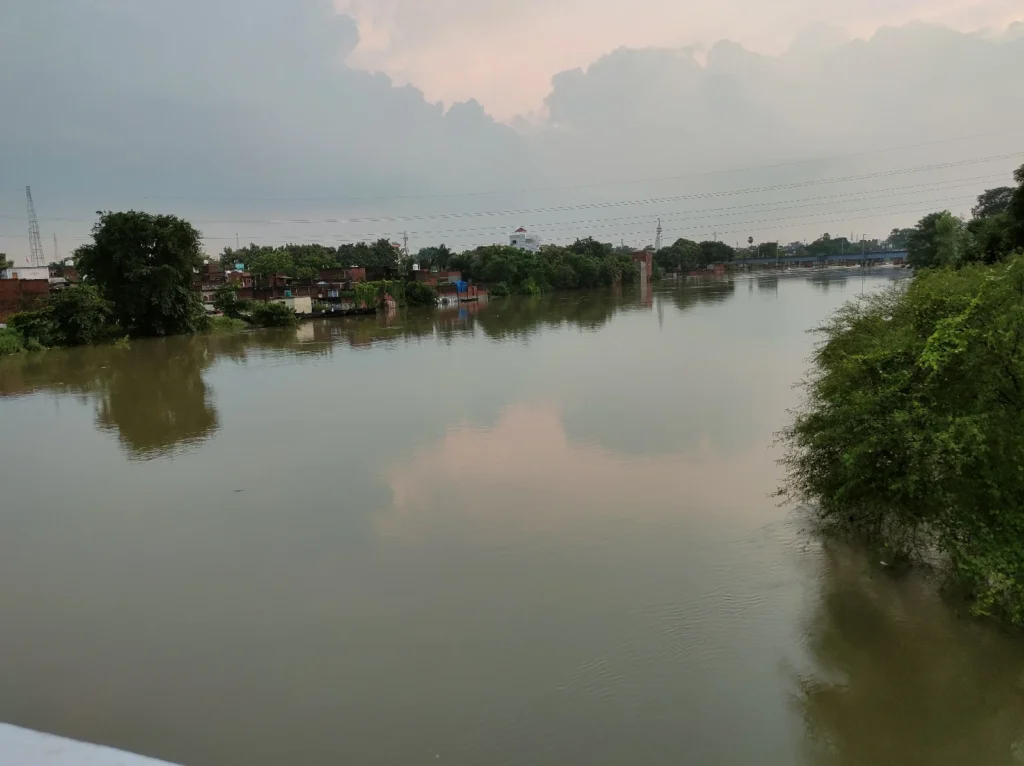
This river is at a small distance from the flow of the river Ganga at that place.
The sage stood there enjoying the natural beauty of the place, after finishing his evening prayer and religious ablutions. His dear disciple Sage Bharadwaja, accompanied him. The sage observed that there were two Krauncha birds, one male, and one female, enjoying each other’s company.
They sat on a branch of the tree, near the banks of the river.
The enlightened sage commented to his dear disciple Bharadwaja “ It appears that the birds have come together after a long gap. See how happy they are in each other’s company.”
The sage was in bliss as his attention was suddenly disrupted by the loud twang.
A hunter had brought down the male Krauncha bird with his arrow as the female bird shrieked in agony. She saw her male partner falling down dead on the ground.
Spiritual Symbolism of Krauncha Bird
Whenever we now have the sight of the Stork or Crane, nothing other than the steady character of Sri Rama can flash across our minds.
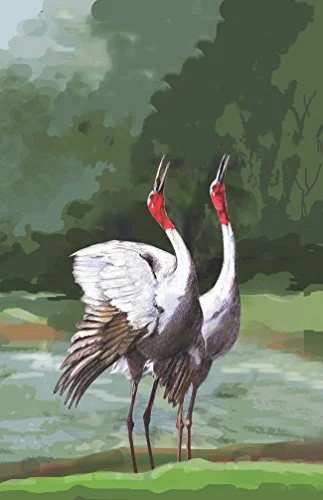
The Ramayana is an explosion of human feeling, thought, anguish, understanding, anger, and despair. Above all, it represents the steadiness and poise of the Krauncha bird, standing, erect, steady on water, and never missing its kill (picking up the fish in shallow water).
The shallow waters represent the shallowness of material existence. The fish represents the Love of God or Bhakti. The long beak of the Krauncha bird represents the strong character of the devotee developed through Sadhana. The steady stance of the Krauncha bird represents one’s one-pointedness towards the goal of Bhakti.
Valmiki writes the Ramayana
The unexpected brutal attack on the male Krauncha bird immensely hurt the sage. So, he uttered a curse on the hunter which emerged in the form of a fine Sanskrit couplet.

It was this initial couplet, found at the beginning of the Valmiki Ramayana that immortalized the epic. The whole scene was actually conceived and planned by the Creator, Sri Brahma so that the great sage could begin work on the epic.
Thus began the Ramayana. The sage left the place hurriedly after uttering the curse. His disciple, sage Bharadwaja followed suit. After reaching the hermitage, sage Valmiki wondered about his own strange demeanor and wondered as to how he could get so angry and that too for a Krauncha bird?
What made him utter the beautiful couplet in the form of a verse? After much contemplation, he realized, through his Yogic powers, that everything happened with the will of the Supreme Being. Sri Brahma, the creator Himself, orchestrated these unusual events.
By His desire, Sri Valmiki, immediately commenced his work on the Ramayana, following this great realization. Now we go a little deeper into the analysis of the event. This event is vital.
Test your Alignment with the Spiritual Subject Matter (only 7-8 Questions)
The scores generated in this Quiz are relative. There are no right or wrong answers. A percentage towards 100 indicates that you are more aligned to the overall subject matter.
Why Sage Valmiki become so Angry?
If the Krauncha bird incident did not occur, the world would have been much poorer because then, Valmiki Ramayan would never exist.
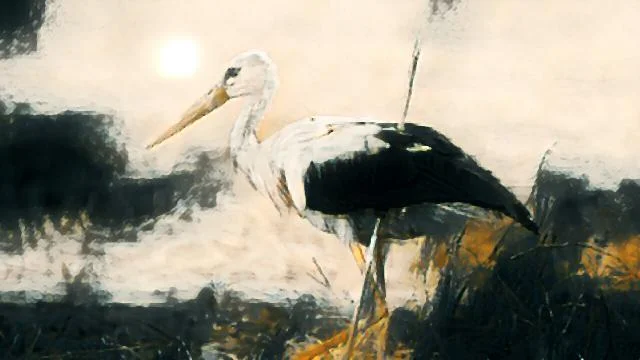
It is because of the Krauncha birds only that the first verse of the Ramayana exists. In grief, looking at the Krauncha bird lie lifeless, Valmiki Ji curses the hunter, a Nishad. The verse presents Valmiki in utter grief, uttering the shloka in the Anushtubh Chanda (= the 32 syllables rhythmic verse).
The verse depicts the inner anger-like fire of the Sage. This is a paradox considering the momentary explosion of anger could destroy his years of penance, and inner knowledge.
‘Sages should have complete control over their senses’. This is a popular belief.
So, no anger should be ill-directed. If they did that, they would be immediately bereft of all wisdom. As a result, they would have to perform severe penances to regain their lost powers. The verse, in anger, could prevent the Sage from escaping from repeated births.
Yet, on deeper contemplation the sage realized that he had never for a moment lost his composure, and yet there was a spurt of anger that arose in him. How could this possibly happen? The cause was something beyond the sage.
His expression of anger came from the annals of the universe. It originated as the Supreme will of Sri Vishnu. So, Sri Brahma served as the tool of the Lord and ignited anger inside the sage’s heart. So, it was actually no anger!
Glories of Sage Valmiki
It is to be understood that the great Valmiki is dearer to us than our parents because his instructions following the death of a mere Krauncha bird took the shape of an epic like the Ramayana.
These very angry verses became a phenomenal tool that can help liberate our souls which are currently enmeshed in repeated births. One can never equate the words or actions of a liberated sage to those of ordinary mortals.
This is being amply proved through the death event of the Krauncha bird. This moment of the curse is understood as the birth of the Ramayana. Hence, the Krauncha bird has been the chief instrument in delivering to us the story of Rama, the perfect man.
This became a moment of inspiration for Sage Valmiki as he realized the divine arrangements made by Sri Brahma and Narayana. For all future generations to come, a mere bird such as the Krauncha became a vehicle to deliver the undying spirituality of the Ramayana.
Please Like the Blog and Share it for Maximum Reach

